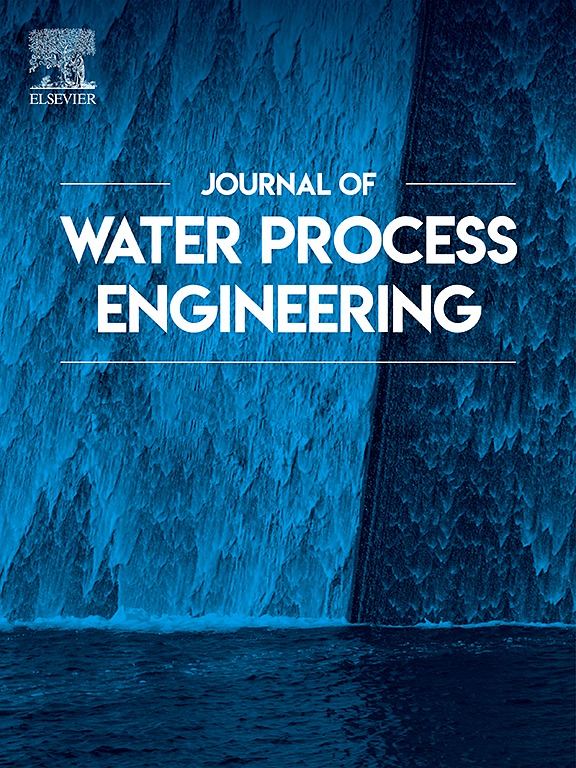Acquiescent tailoring of TiO2 band gap via surged NiSe NPs decoration for accelerated photocatalytic degradation of methyl orange
IF 6.3
2区 工程技术
Q1 ENGINEERING, CHEMICAL
引用次数: 0
Abstract
TiO₂-based photocatalysts are highly active for the degradation of methyl orange in water due to their cost-effectiveness and high efficacy. However, their activity is often limited by factors such as high band gap (3.26 eV), Schottky barrier resistance and rapid electron-hole recombination. To overcome these limitations and enhance catalytic activity, a facile and effective approach is required. In this study, a highly dispersed NiSe-based TiO₂ photocatalyst with a lower band gap and electron-hole recombination was formed using the sol-gel method. The samples were characterized by XRD, Raman spectroscopy, SEM, FTIR, TG-DTG, UV–Vis DRS and elemental mapping. Results revealed that NiSe nanoparticles dispersed smoothly over TiO2 matrix and effectively reduced the bad gap to 1.5 eV. Experimental results showed that among tested catalysts, 32NiSe/TiO₂ exhibits exceptional performance, achieving a rapid degradation efficiency of 99.2 % in 70 min time due to its remarkable activity rate of 1.33 mmol/h·g, turnover number (TON = 0.51) and turnover frequency (TOF = 0.43 h−1) along with a shorter half-life of 0.176 h. The photodegradation of methyl orange over 32NiSe/TiO₂ predominantly followed pseudo-first-order kinetics with a higher reaction rate of 0.065 min−1. In addition, the exceptional regeneration ability and stability of 32NiSe/TiO₂ make it a suitable and cost-effective candidate for real-world applications.

求助全文
约1分钟内获得全文
求助全文
来源期刊

Journal of water process engineering
Biochemistry, Genetics and Molecular Biology-Biotechnology
CiteScore
10.70
自引率
8.60%
发文量
846
审稿时长
24 days
期刊介绍:
The Journal of Water Process Engineering aims to publish refereed, high-quality research papers with significant novelty and impact in all areas of the engineering of water and wastewater processing . Papers on advanced and novel treatment processes and technologies are particularly welcome. The Journal considers papers in areas such as nanotechnology and biotechnology applications in water, novel oxidation and separation processes, membrane processes (except those for desalination) , catalytic processes for the removal of water contaminants, sustainable processes, water reuse and recycling, water use and wastewater minimization, integrated/hybrid technology, process modeling of water treatment and novel treatment processes. Submissions on the subject of adsorbents, including standard measurements of adsorption kinetics and equilibrium will only be considered if there is a genuine case for novelty and contribution, for example highly novel, sustainable adsorbents and their use: papers on activated carbon-type materials derived from natural matter, or surfactant-modified clays and related minerals, would not fulfil this criterion. The Journal particularly welcomes contributions involving environmentally, economically and socially sustainable technology for water treatment, including those which are energy-efficient, with minimal or no chemical consumption, and capable of water recycling and reuse that minimizes the direct disposal of wastewater to the aquatic environment. Papers that describe novel ideas for solving issues related to water quality and availability are also welcome, as are those that show the transfer of techniques from other disciplines. The Journal will consider papers dealing with processes for various water matrices including drinking water (except desalination), domestic, urban and industrial wastewaters, in addition to their residues. It is expected that the journal will be of particular relevance to chemical and process engineers working in the field. The Journal welcomes Full Text papers, Short Communications, State-of-the-Art Reviews and Letters to Editors and Case Studies
 求助内容:
求助内容: 应助结果提醒方式:
应助结果提醒方式:


